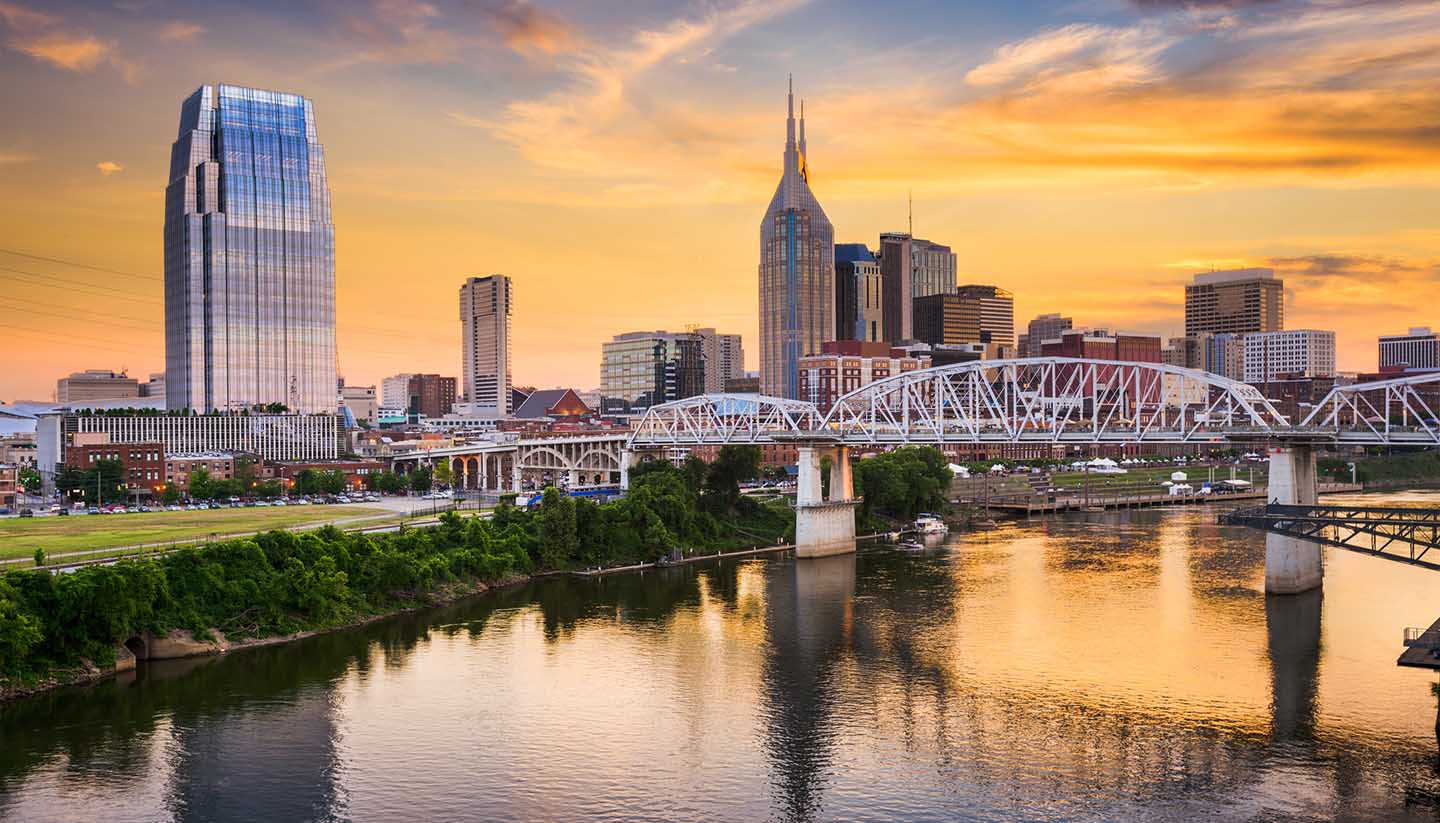Nashville History
Prior to the arrival of Europeans in the 16th century, the area that is now occupied by Nashville was home to a succession of Native American tribes, among them the Cherokee, Chickasaw and Shawnee, who were drawn to the region by its fertile land and plentiful wildlife.
But their reign was came to an abrupt end when Hernando de Soto explored the area in the 16th century, paving the way for an influx of French fur traders. Nevertheless, it took a pair of Britons to construct the first permanent settlement, Bluff Station, which was put up in 1780.
By 1800, Nashville had begun to establish itself as a centre for cotton growing, getting its city charter in 1806 and expanding to become capital of Tennessee in 1843. Its first setback came in 1861, when Tennessee became the last state to join the Confederacy – a move that immediately made Nashville a primary target for Union forces. In 1862, it became the first state capital to fall to the Union Army during the American Civil War and was the scene of a bloody battle in 1864.
In the years that followed, Nashville expanded rapidly, becoming a hub for trade, in particular for cotton and coffee. In 1918, its trading prowess led to a disaster remembered as the Great Train Wreck, which saw an inbound passenger train collide with an outbound express, killing 101 people in the process. The incident remains one of the deadliest in US history.
As the early 20th century wore on, Nashville’s growth remained steady and was barely interrupted by WWI and WWII. Nashville’s music industry was born during the same period, starting with the Grand Ole Opry which arrived in 1920.
By the 1940s, the Opry had moved downtown and recording labels were flocking to the city. The Country Music Association was founded soon after, ensuring the city’s future success. The Opry moved to the Gaylord complex in 1974, and as country music went global, the city’s stock rose even further and it became the iconic destination it is today.
Did you know?
• Elvis Presley recorded more than 200 of his songs on Nashville’s famous Music Row.
• The city also became the first in the US to get a radio broadcasting license, attaining its credentials in 1941.
• Nashville’s 42m-high (138ft)Athena Parthenos is the largest free-standing statue in the Western hemisphere.


